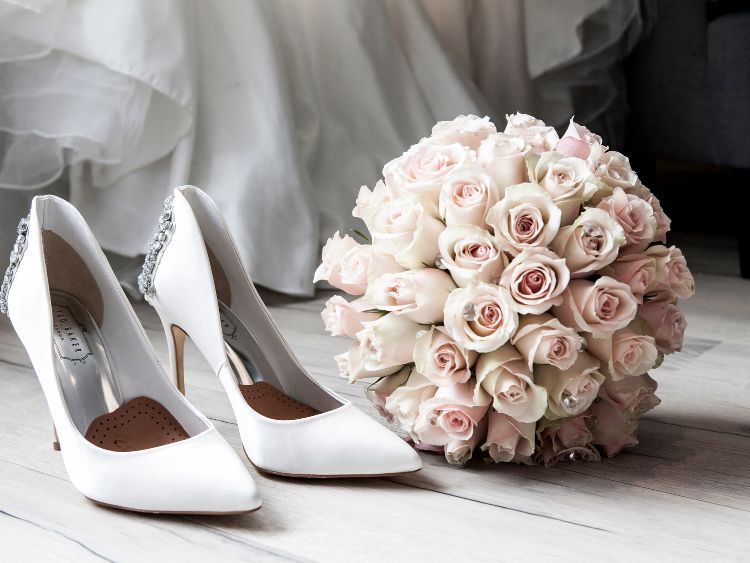When it comes to fashion, few things cause more confusion than navigating the complex world of dress codes. The lines between semi-formal and formal attire can blur, leaving many people wondering what’s appropriate for various occasions. If you’ve ever found yourself staring at an event invitation, scratching your head over what to wear, you’re not alone. Let’s dive into the distinctions between semi-formal vs formal attire, providing clarity so you can confidently dress for any event.
Cracking the Code of Semi-Formal vs Formal Attire
Picture this: you’ve been invited to an event, and the invitation specifies a semi-formal dress code. But wait—what exactly does that mean? And how is it different from formal attire? If you’re perplexed by the subtleties between semi-formal and formal dress codes, you’re not alone. These terms can be tricky, and dressing accordingly can feel like an impossible puzzle to solve. No worries, though! This guide will take you through the ins and outs of semi-formal vs formal attire so you’ll never second-guess your wardrobe choices again.
What Is Semi-Formal Attire?
Semi-formal attire occupies that sweet spot between casual and formal. Think of it as dressing up without going over the top. For men, this could mean wearing a dark suit or a dress shirt with tailored trousers and a tie, but not necessarily a tuxedo. Women might opt for a cocktail dress or a stylish ensemble, such as a blouse paired with a knee-length skirt or tailored pants.
Key Elements of Semi-Formal Attire for Men:
- Dark-colored suit (black, navy, charcoal)
- Dress shirt (white or light shades work best)
- Tie (optional in some cases, but generally recommended)
- Dress shoes (oxfords, loafers)
- Belt that matches the shoes
Key Elements of Semi-Formal Attire for Women:
- Cocktail dress or evening gown (knee-length or midi length)
- Stylish pantsuit or tailored separates
- Closed-toe heels or dressy flats
- Elegant accessories (minimal jewelry)
The beauty of semi-formal attire is its flexibility. While it still requires you to dress smartly, you have room to inject a little more personality and creativity than you might with a strict formal dress code.
What Is Formal Attire?
Formal attire, on the other hand, is the pinnacle of elegance. This dress code is typically reserved for upscale events such as weddings, galas, or award ceremonies. It leaves little room for interpretation—you’re expected to dress to the nines.
Key Elements of Formal Attire for Men:
- Tuxedo or black suit
- Crisp white dress shirt
- Black bow tie (for a classic tuxedo look)
- Polished dress shoes (black patent leather is ideal)
- Black socks (yes, this is non-negotiable for formal wear)
Key Elements of Formal Attire for Women:
- Long evening gown or a floor-length dress
- Formal cocktail dress (for slightly less formal settings)
- High heels (stilettos or pumps)
- Elegant clutch or evening bag
- Statement jewelry (think pearls or diamonds)
When the invitation says formal, you should assume the event is sophisticated, and your outfit should reflect that level of elegance. There’s little room for a casual twist here—this is the time to embrace the glam.
Semi-Formal vs Formal: Key Differences
Now that we’ve broken down what each dress code entails, let’s compare semi-formal vs formal side by side:
| Aspect | Semi-Formal Attire | Formal Attire |
|---|---|---|
| Occasions | Business dinners, cocktail parties, weddings | Galas, black-tie events, formal weddings |
| Men’s Clothing | Dark suit, dress shirt, optional tie | Tuxedo, bow tie, black suit |
| Women’s Clothing | Cocktail dress, pantsuit | Long evening gown, formal cocktail dress |
| Shoes | Dress shoes, polished loafers | Patent leather shoes (men), high heels (women) |
| Accessories | Minimal jewelry, simple accessories | Statement pieces, formal bags, fine jewelry |
As you can see, the differences are in the details. While both dress codes require polished, sophisticated outfits, formal attire demands a bit more—both in terms of outfit formality and overall presentation.
When Should You Wear Semi-Formal Attire?
Understanding the context is crucial for decoding the dress code. Semi-formal attire is typically called for at:
- Weddings (daytime or casual evening weddings)
- Business events or formal dinners
- Cocktail parties or upscale birthday parties
- Funerals or memorial services (choose darker colors)
While you can often push the boundaries slightly with semi-formal attire, it’s always best to err on the side of caution. It’s better to be slightly overdressed than underdressed.
When Should You Wear Formal Attire?
Formal attire is reserved for the most special occasions, such as:
- Black-tie weddings
- Galas or charity balls
- Award ceremonies
- Formal state dinners
- Opera, ballet, or red-carpet events
These are the events where you can pull out all the stops and wear your most glamorous attire. Think elegance, sophistication, and refinement.
FAQs About Semi-Formal vs Formal Attire
1. Can I wear a tuxedo for a semi-formal event?
While a tuxedo is always a classy choice, it’s often overkill for a semi-formal event. Stick to a well-tailored suit unless the invitation specifically mentions a higher level of formality.
2. Is it appropriate to wear jeans to a semi-formal event?
Nope! Jeans, no matter how fancy, don’t cut it for semi-formal attire. Opt for tailored trousers or a dress instead.
3. Can women wear pants to a formal event?
Absolutely! A formal pantsuit or elegant trousers paired with a glamorous blouse can be a stunning alternative to a traditional gown.
4. Is there any crossover between semi-formal and formal attire?
There is some overlap—think cocktail dresses for women or dark suits for men—but formal attire usually requires more polish and sophistication.
5. What color should I avoid wearing for formal events?
It’s best to avoid bright, flashy colors that draw too much attention. Stick to classic, neutral tones like black, navy, or deep jewel tones for formal events.
Semi-Formal vs Formal: Nailing the Look
So, how do you ensure you hit the right note when dressing for semi-formal vs formal events? Here’s a quick guide to make sure you’re never under or overdressed:
- Check the invitation: Most events will clearly specify the dress code. If it says semi-formal, think chic and polished but not over-the-top. If it says formal, go all out!
- Evaluate the venue: If the event is being held at a swanky venue or a grand hotel, it’s safe to lean towards the formal end of the spectrum. A smaller, more casual location may call for semi-formal.
- Consider the time of day: Daytime events usually call for lighter, less formal attire, while evening events tend to be dressier.
- Ask if unsure: When in doubt, don’t hesitate to ask the host. It’s always better to clarify than risk wearing the wrong outfit.
Summary: The Final Word on Semi-Formal vs Formal
The difference between semi-formal vs formal comes down to the occasion and the level of sophistication required. Semi-formal attire allows for a bit of personal flair while keeping it polished, whereas formal attire demands elegance and refinement from head to toe. Whether you’re attending a business event, a wedding, or a gala, knowing these distinctions will ensure you always dress to impress.
Authoritative Links for Further Reading:
- https://www.gq.com/style/article/black-tie-dress-code
- https://www.vogue.com/article/everything-you-need-to-know-about-formal-wear
- https://www.theknot.com/content/what-to-wear-to-a-semi-formal-wedding
- https://www.brides.com/gallery/dress-codes-101-semi-formal







